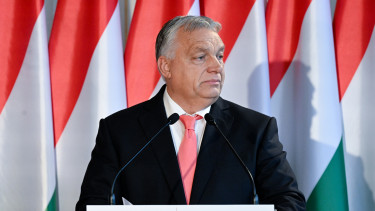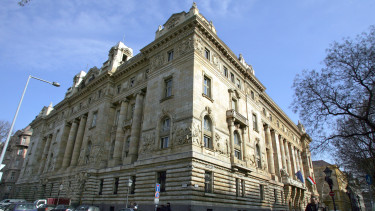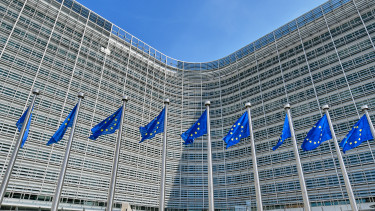Economy
Hungary's digital progress in line with EU average
Hungary performs best, slightly above the EU average, in the broadband connectivity dimension, thanks to its widespread adoption of fast and ultrafast broadband and to its high coverage of next generation access (NGA) and ultrafast broadband infrastructure. Hungary ranks 14th in broadband internet access and 12th in 5G readiness, according to the report. Although fixed broadband coverage stagnated at around 94% of homes, fast broadband coverage increased to 87%. Well above half of homes subscribe to at least 30 Mbps (58%), above the EU average of 41%. In addition, Hungary continues to score well on ultrafast connectivity, mainly owing to its widespread cable networks: coverage stands at 82% (compared to 60% in the EU as a whole).
Mobile broadband coverage also increased to above the EU average. However, despite significant improvement, mobile broadband take-up is still the lowest in the EU (59 subscriptions per 100 people, against 96 in the EU overall). This may be because prices for mobile phone users are persistently among the highest in Europe, the report added.
According to the DESI report, integration of digital technology and digital public services remain the biggest challenges in Hungary, which is lagging well behind the EU average in both areas. The quality of e-government services is low and take-up is below average. Only 14% of companies, the lowest ratio in the EU, use an enterprise resource planning software package to share information between different functional areas.
The use of e-commerce, big data and cloud services shows a similar pattern, the report said. Basic digital skills remain below the EU average (Hungary ranks 21st out of 28), and basic software skills are also modest (22nd out of 28). Only half of people aged between 16 and 74 have basic digital skills, compared to 57% in the EU as a whole. 26% of the population has advanced internet user skills, which puts Hungary in 21st place in the ranking. ICT specialists account for a similar proportion of the workforce as in the rest of the EU (3.6% against 3.7% in the EU). As regards ICT graduates, Hungary exceeds the EU average at 4.3%. The number of female ICT specialists is still low, less than 1% of all female employees, DESI found.
As for the whole of the European Union, all EU countries improved their digital performance over the past year according to the report. Finland, Sweden, the Netherlands, and Denmark scored the highest ratings in DESI 2019 and are among the global leaders in digitalisation. The report found that countries that have set ambitious targets in line with the European digital single market strategy and have laid the groundwork through investments have developed faster over a relatively short period.
The European Commission also published its Women in Digital (WiD) scoreboard, which found that EU members that are competitive digitally have also performed well in the inclusion of women in digital jobs, careers and entrepreneurship. The leaders in this regard are Finland, Sweden, Luxemburg and Denmark. However, there is a gender gap in all the 13 indicators at EU level. The gap is largest in ICT specialist skills and employment, as only 17% of ICT specialists are women, the report said.
Mobile broadband coverage also increased to above the EU average. However, despite significant improvement, mobile broadband take-up is still the lowest in the EU (59 subscriptions per 100 people, against 96 in the EU overall). This may be because prices for mobile phone users are persistently among the highest in Europe, the report added.
According to the DESI report, integration of digital technology and digital public services remain the biggest challenges in Hungary, which is lagging well behind the EU average in both areas. The quality of e-government services is low and take-up is below average. Only 14% of companies, the lowest ratio in the EU, use an enterprise resource planning software package to share information between different functional areas.
The use of e-commerce, big data and cloud services shows a similar pattern, the report said. Basic digital skills remain below the EU average (Hungary ranks 21st out of 28), and basic software skills are also modest (22nd out of 28). Only half of people aged between 16 and 74 have basic digital skills, compared to 57% in the EU as a whole. 26% of the population has advanced internet user skills, which puts Hungary in 21st place in the ranking. ICT specialists account for a similar proportion of the workforce as in the rest of the EU (3.6% against 3.7% in the EU). As regards ICT graduates, Hungary exceeds the EU average at 4.3%. The number of female ICT specialists is still low, less than 1% of all female employees, DESI found.
As for the whole of the European Union, all EU countries improved their digital performance over the past year according to the report. Finland, Sweden, the Netherlands, and Denmark scored the highest ratings in DESI 2019 and are among the global leaders in digitalisation. The report found that countries that have set ambitious targets in line with the European digital single market strategy and have laid the groundwork through investments have developed faster over a relatively short period.
The European Commission also published its Women in Digital (WiD) scoreboard, which found that EU members that are competitive digitally have also performed well in the inclusion of women in digital jobs, careers and entrepreneurship. The leaders in this regard are Finland, Sweden, Luxemburg and Denmark. However, there is a gender gap in all the 13 indicators at EU level. The gap is largest in ICT specialist skills and employment, as only 17% of ICT specialists are women, the report said.











